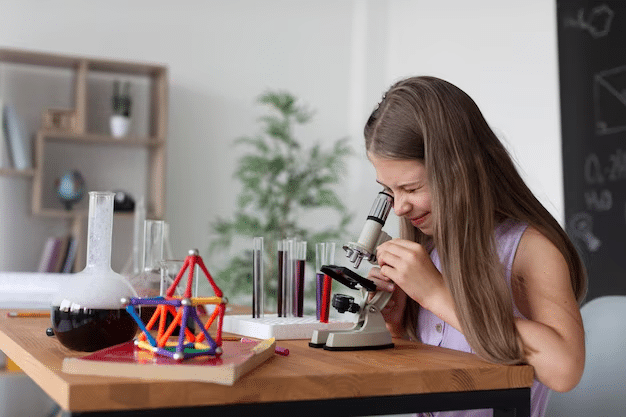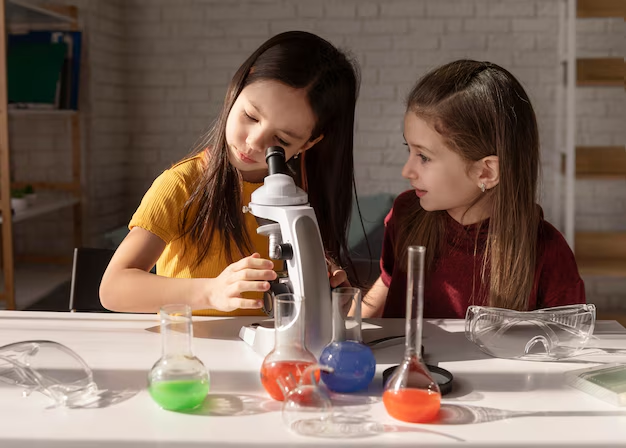Science is a field that thrives on exploration, observation, and experimentation. While theoretical knowledge provides a foundation, hands-on learning in science education offers students the opportunity to actively engage with scientific concepts, fostering deeper understanding and critical thinking.
What Is Hands-On Learning?

Hands-on learning, also known as experiential or active learning, involves direct engagement with materials, tools, and experiments. This method allows students to explore scientific theories and principles in practical, real-world contexts, making abstract concepts more tangible and understandable.
Key Benefits of Hands-On Learning in Science Education
1. Enhances Understanding of Scientific Concepts
- Practical experiences help students bridge the gap between theory and practice.
- Abstract ideas, such as the laws of physics or chemical reactions, become clearer through experimentation.
2. Promotes Critical Thinking and Problem-Solving
- Encourages students to ask questions, analyze data, and draw conclusions.
- Develops the ability to troubleshoot and think logically when experiments don’t go as planned.
3. Improves Retention and Engagement
- Active participation makes lessons more memorable.
- Engaging activities hold students’ attention better than passive lectures.
4. Encourages Curiosity and Creativity
- Students explore new ideas and test hypotheses, fostering a spirit of inquiry.
- Creative approaches to solving problems enhance innovation.
5. Builds Teamwork and Communication Skills
- Group experiments and projects teach collaboration, delegation, and communication.
- Sharing results and insights helps students articulate their findings effectively.
6. Develops Practical Skills
- Hands-on learning equips students with laboratory skills, such as using scientific instruments and conducting experiments safely.
- These skills are invaluable for careers in STEM fields.
7. Cultivates a Love for Science
- Experiencing the joy of discovery inspires a passion for science and encourages students to pursue further studies or careers in scientific disciplines.
Examples of Hands-On Learning in Science
1. Laboratory Experiments
- Dissecting a frog to learn anatomy.
- Conducting titrations in chemistry to understand acid-base reactions.
2. Fieldwork
- Collecting soil or water samples to analyze ecological systems.
- Observing celestial objects through telescopes in astronomy studies.
3. Science Fairs and Competitions
- Encouraging students to design and execute their own experiments.
- Presenting findings to an audience develops confidence and communication skills.
4. Interactive Simulations
- Using virtual labs and simulations to replicate experiments that may be too complex or dangerous to conduct physically.
Challenges in Implementing Hands-On Learning
1. Resource Limitations
- Lack of funding for lab equipment and materials can hinder practical activities.
2. Time Constraints
- Preparing and conducting experiments may require more time than traditional teaching methods.
3. Teacher Training
- Educators need to be well-trained to effectively integrate hands-on activities into their teaching.
Despite these challenges, the benefits of hands-on learning far outweigh the difficulties, making it an essential component of effective science education.
Conclusion
Hands-on learning in science education transforms students from passive learners to active participants, fostering a deeper connection with the subject matter. By enhancing understanding, promoting critical thinking, and developing practical skills, this approach prepares students for future scientific endeavors and nurtures their curiosity about the world. Schools and educators should prioritize hands-on learning to cultivate the next generation of scientists, innovators, and problem-solvers.
FAQs
Q1: What is hands-on learning in science?
Hands-on learning involves practical activities like experiments, fieldwork, and projects that allow students to engage directly with scientific concepts.
Q2: Why is hands-on learning important in science education?
It enhances understanding, promotes critical thinking, and develops practical skills necessary for scientific exploration and future careers.
Q3: How can schools implement hands-on learning?
Schools can incorporate labs, field trips, science fairs, and interactive simulations into their curriculum to provide experiential learning opportunities.
Q4: What are some examples of hands-on activities in science?
Examples include conducting experiments in a lab, observing wildlife in nature, or participating in science-based competitions.
Q5: Are there challenges to hands-on learning?
Yes, challenges include resource limitations, time constraints, and the need for teacher training, but these can be addressed with strategic planning and support.


